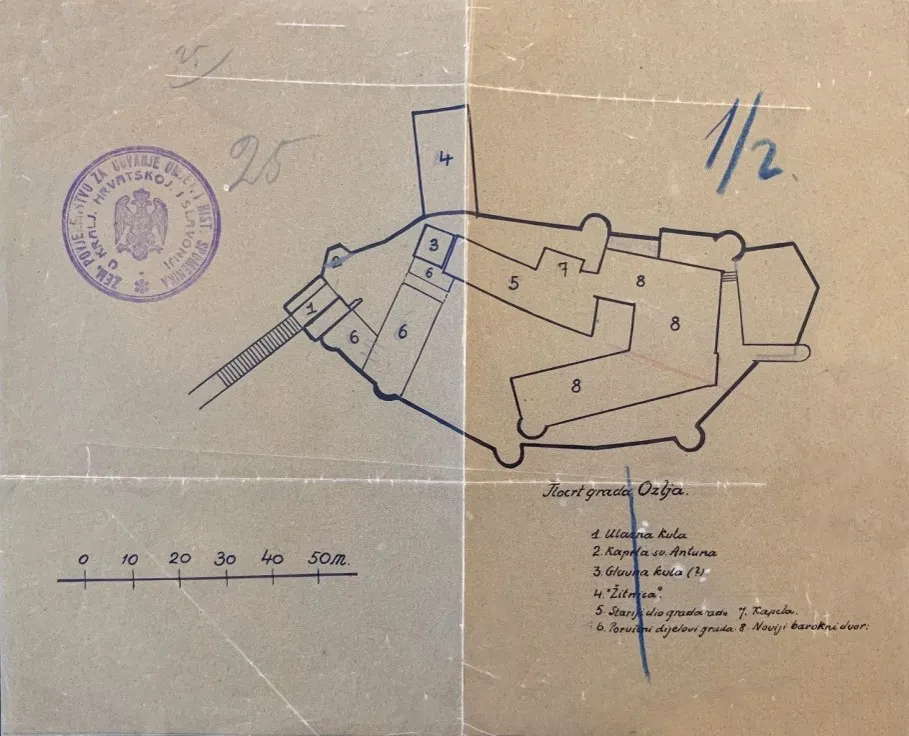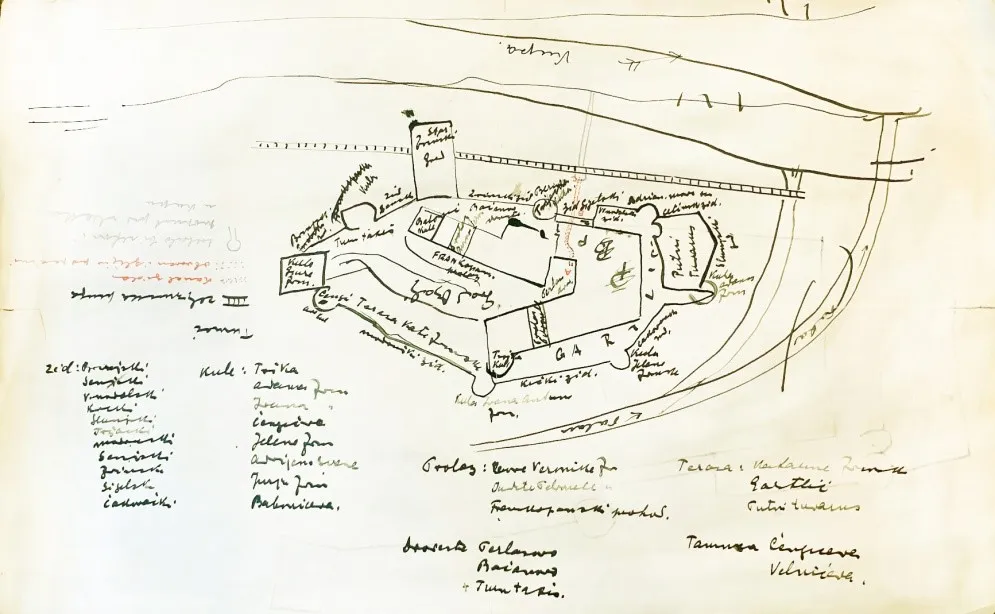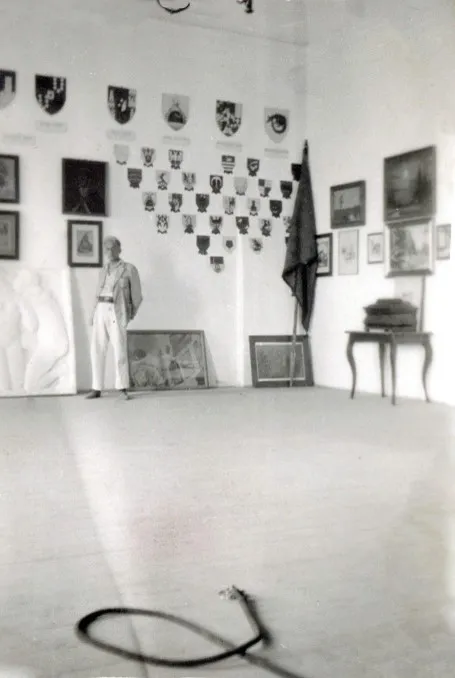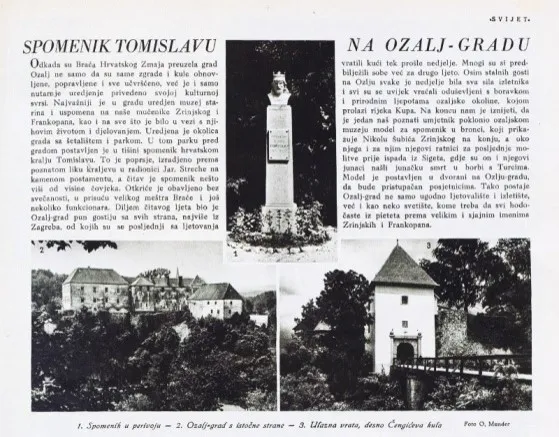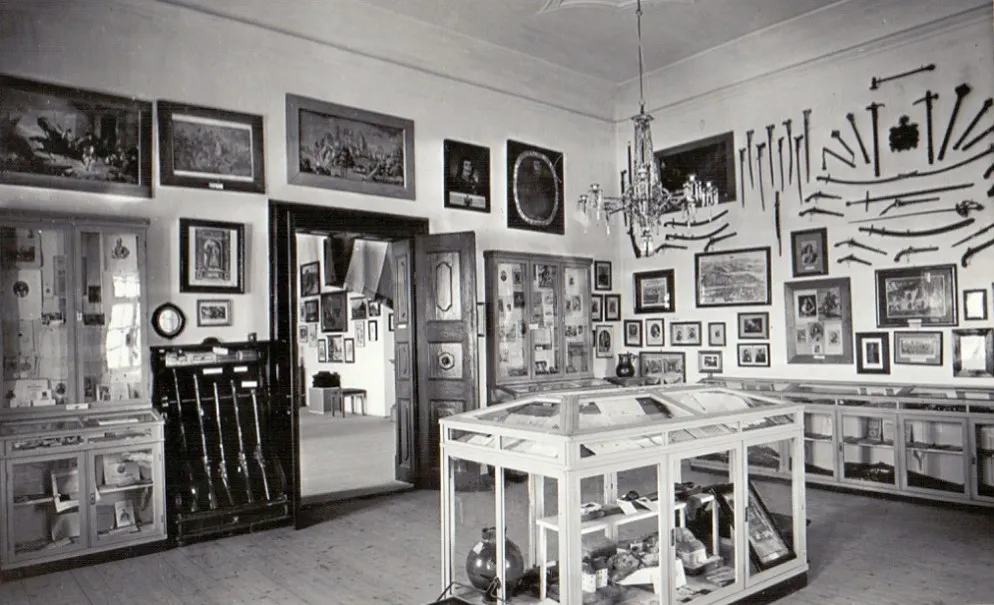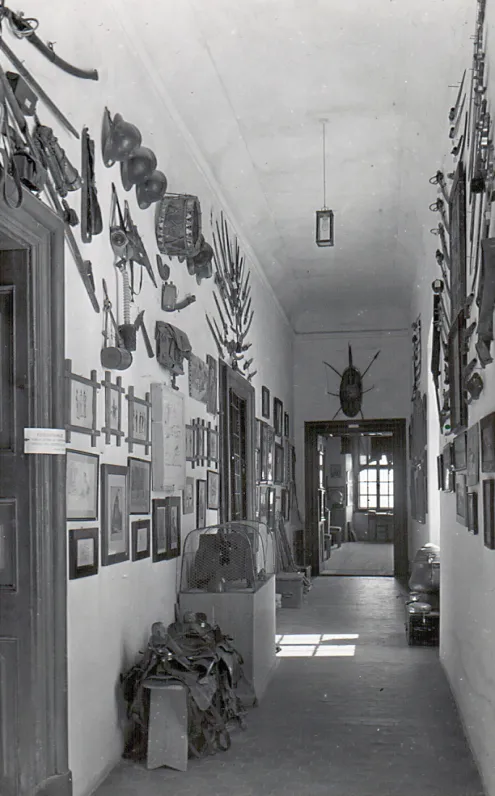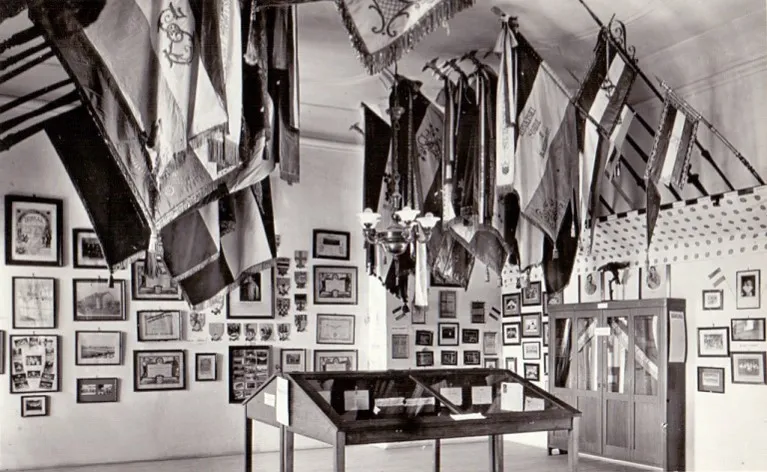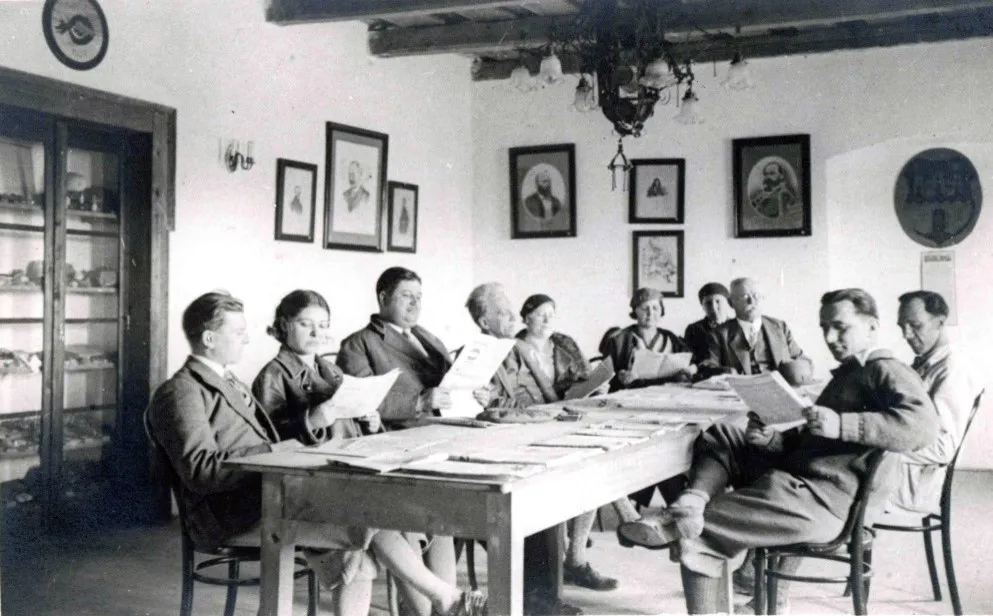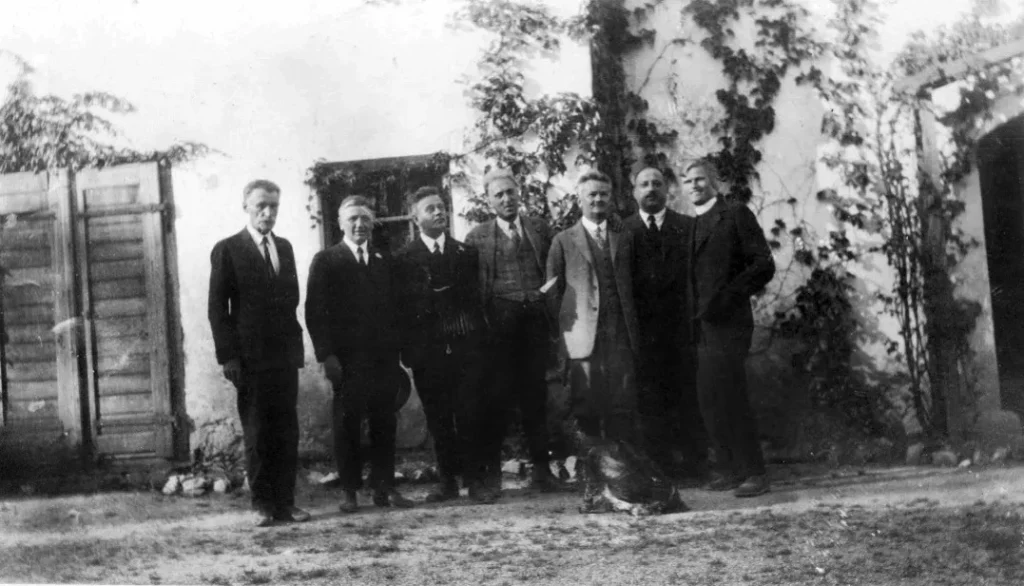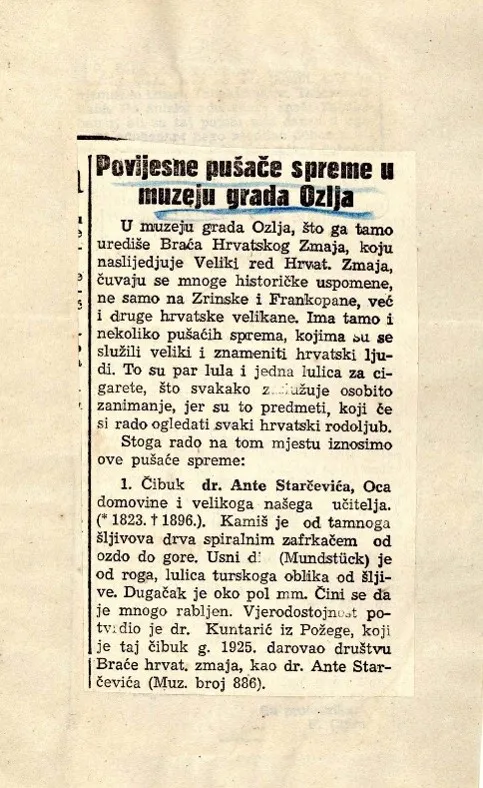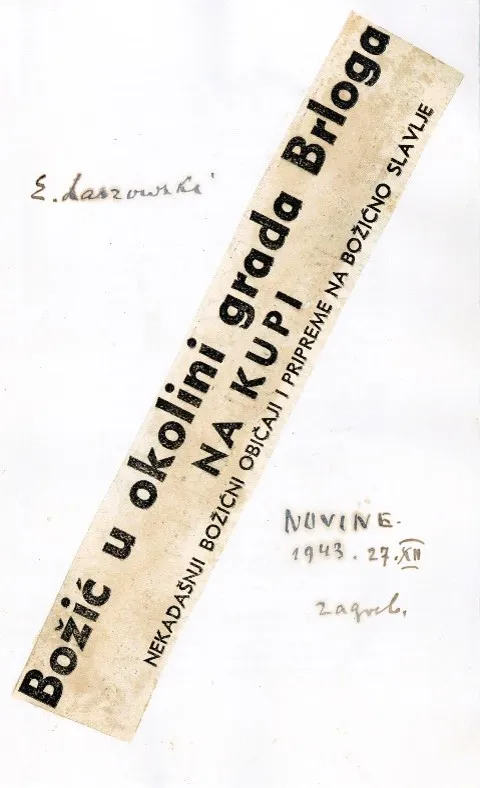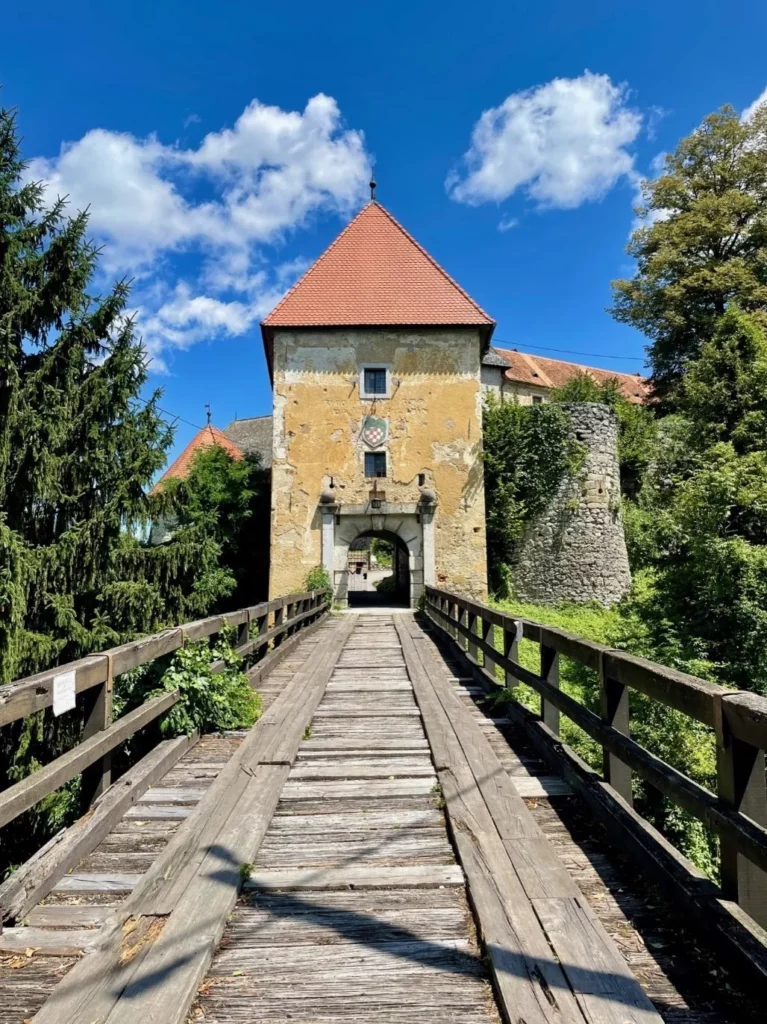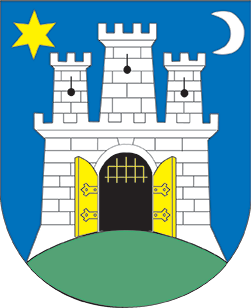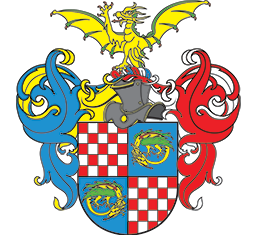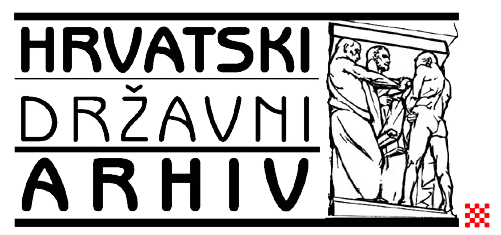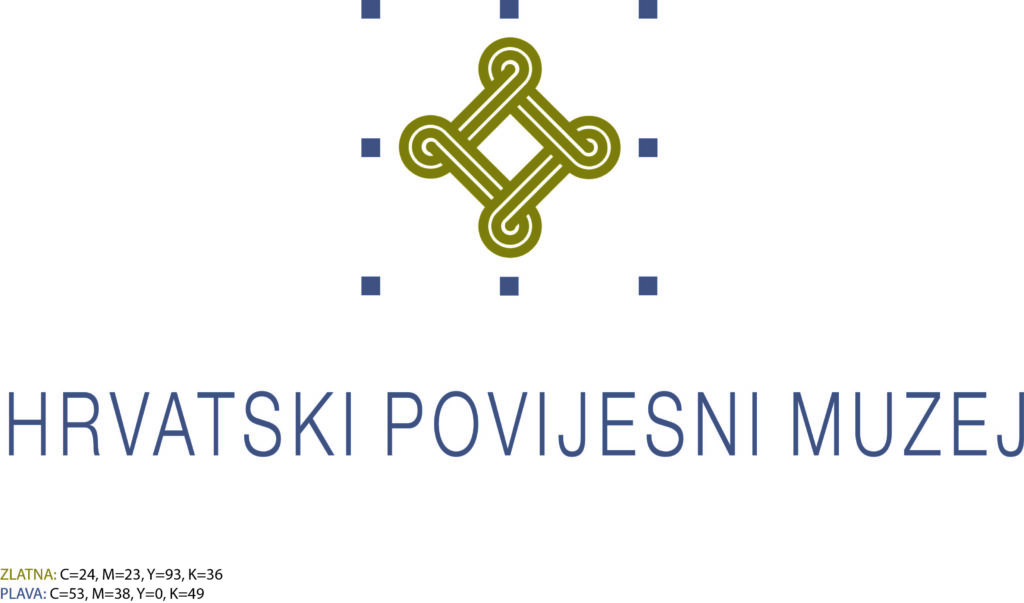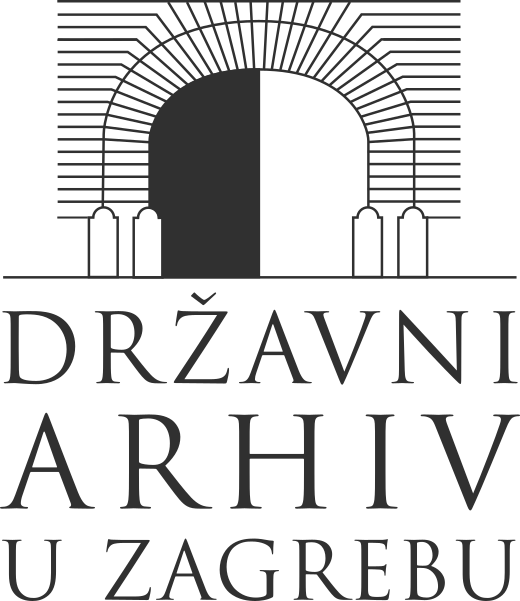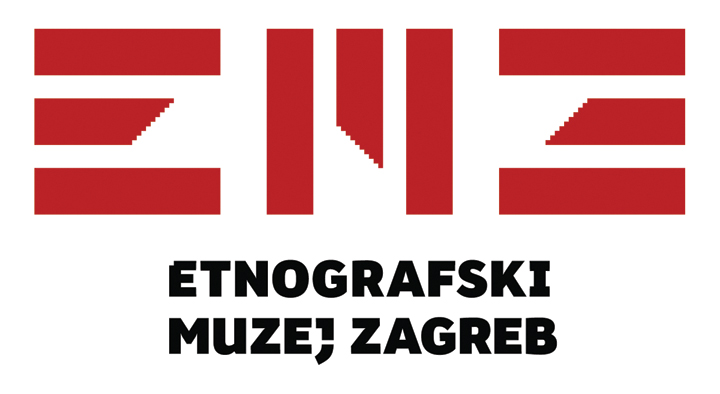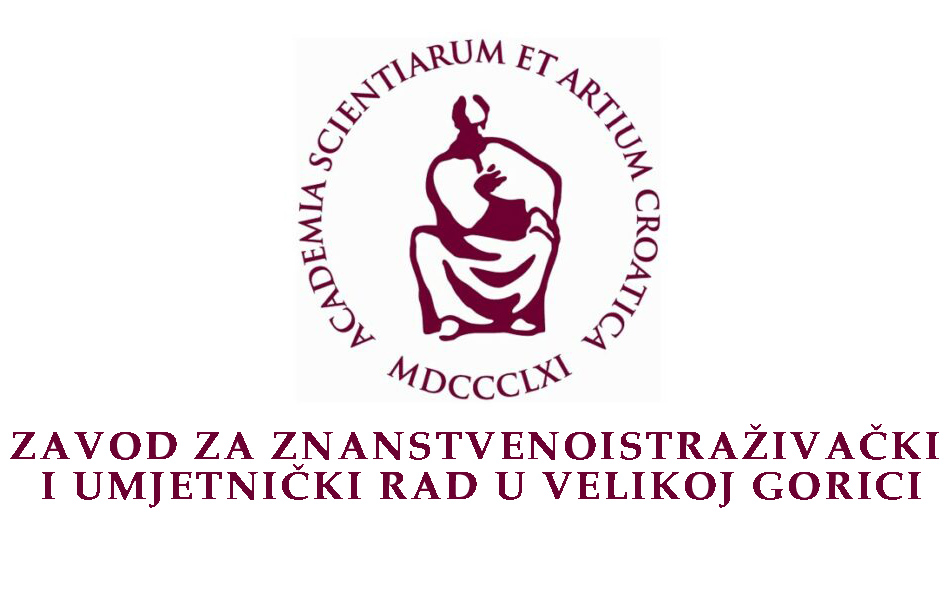11. History of Museum of Ozalj
On a steep peak you stand rigid, proud,
Like a bold soul of your ancient lords,
Ready to challenge celestial stars,
You ask proudly: “Who can match me,
Could anyone say their praise,
Like I can – the house of the Zrinski Ban?!”
(August Šenoa, In the Town of Ozalj, 1872)
Museum activity in the old town of Ozalj has been ongoing since 1930 when, thanks to Emilij Laszowski and the “Brethren of the Croatian Dragon” Society, Zrinski-Frankopan Museum was founded. An idea of a museum existed even before the Society came into possession of the old town of Ozalj – almost a mythical toponym for Laszowski and the Society.
In 1909, when Ozalj Town Archives were taken over by the State Archives in Zagreb, the Society learned that it was possible to obtain the old town of Ozalj as a gift to the Croatian people from Prince Thurn und Taxis. The Ozalj Castle was particularly neglected after the collapse of the Austro-Hungarian Monarchy in 1918 when large estates in Croatia, such as those of Princes Thurn und Taxis in Croatia, came under the “state sequestrate,” i.e., administration of the Department of Justice of the Kingdom of Serbs, Croats, and Slovenes in Zagreb. Subsequent regulations and court decisions were later supposed to settle the ownership of these “forgotten” estates.
In such circumstances, and with Emilij Laszowski’s special commitment, the Society began activities related to the Zrinski-Frankopan cult in the town of Ozalj as early as 1924. Thanks to Laszowski’s perseverance – working intensively to strengthen the sensibility in the Society and making constant inquiries towards the prince in Regensburg – the old town of Ozalj was gifted to the Society by a deed of donation from Albert Maria Lamoral Thurn und Taxis on 6 July, 1928. As the town was almost in a ruinous state, the Society immediately prepared project documentation for its restoration led by Laszowski. After the renovation, one part was designed as a resort with a restaurant and 32 rooms, while the other part housed a museum, archives, and a library.
11.3: Prince Albert Maria Lamoral Thurn und Taxis
Representation from the beginning of the book by Emilij Laszowski Ozalj i njegovi gospodari (Ozalj and Its Masters)(Zagreb, 1929). The deed of donation is also published in the book on page 88.

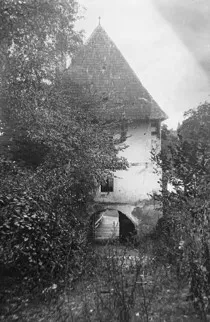
11.7 – 8: Inside the town of Ozalj before renovation – kapikula (entrance tower) and entrance to the chapel
Photographer unknown, Ozalj, 1911
HDA
11.9: Zrinski-Frankopan Day in Ozalj
Viktor Rybak, Ozalj, June 1, 1930
HDA
Zrinsko-frankopanski dan na Ozlju organizirala je Družba „Braće Hrvatskoga Zmaja“ 1. lipnja 1930. godine. Taj je datum bio odabran, jer je to bila prva nedjelja prije rođendana Petra Zrinskog (6. lipnja). Za izletnike je bio organiziran poseban vlak, koji je iz Zagreba krenuo u 7:40, a u Ozalj je stigao u 9:35. Na kolodvoru ih je dočekao Marko Muhvić, načelnik općine te im se prigodno obratio, a na njegovu je dobrodošlicu odgovorio Emilij Laszowski. Izletnici su stigli pješice do Ozlja. U Ozlju su iz dvorske kapelice bile uzete relikvije (kralježak koji je prije čuvao Velimir Deželić st.) smješten u maloj škrinji te su u povorci krenuli prema župnoj crkvi na susjednom brdu. Počasna straža sastojala se od osam članova Društva „Petar
The Zrinski-Frankopan Day in Ozalj was organised by the “Brethren of the Croatian Dragon” Society on 1 June, 1930. This date was chosen because it was the first Sunday before the birthday of Petar Zrinski (6 June). A special train was organised for excursionists, which departed from Zagreb at 7:40 a.m. and arrived in Ozalj at 9:35 a.m. At the station, they were welcomed by Marko Muhvić, the Mayor, who addressed them with a speech, and Emilij Laszowski responded to his welcome. The excursionists walked to Ozalj. In Ozalj relics were taken from the court chapel (a vertebra previously kept by Velimir Deželić, Sr.) placed in a small chest, and they proceeded in a procession to the parish church on the adjacent hill. An honour guard consisted of eight members of the Society “Petar Zrinski,” one of whom, Valenščak, carried the mentioned chest, followed by nine members of the “Croatian Women” and four members of the Croatian scouts. Behind them was the flag of the Society of the BCD, carried by Maksimilijan Juranić, along with Emilij Laszowski, Velimir Deželić, and Tonka Deželić. Behind them followed government representatives: the Mayor of Karlovac, Gustav Modrušan, the district chief Špun-Strižić, the Mayor of Ozalj, Marko Muhvić, followed by members of the Society of the BCD and others.
The mass was served by chaplain Zlatko Kolander, assisted by the parish priest from Vrhovec Stanković and the prebend Katić. After the mass, the relics were returned to the court chapel in the same procession. Lunch followed in local taverns, and at 3 p.m. an afternoon program began. Participants included Ljerka Milošević, who recited Šenoa’s poem “In the Town of Ozalj,” Milutin Majer, who spoke about Nikola Zrinski, and Zdenka Žagar, who recited Harambašić’s poem “To the Martyrs.” This concluded the program of the Zrinski-Frankopan Day. According to estimates, over 6000 people from the surrounding area gathered in Ozalj that day (some even came from Sarajevo), of which around 1500 arrived by morning train from Zagreb (the composition consisted of 13 wagons).
In an unpublished manuscript, The History of the Ozalj Museum, Laszowski describes how the museum was established in the old town of Ozalj. By handing over the Zagreb City Museum of the Free and Royal City of Zagreb in 1925 to the City Administration and its relocation to the basement of the Art Pavilion, the showcases in the Tower above the Stone Gate remained empty. Laszowski came up with an idea of placing his Zrinski-Frankopan collection in them, which he had been collecting since his youth, as well as other related objects from the state archives in Zagreb and the city library. This museum was called the “Zrinski-Frankopan” museum of the Brethren of the Croatian Dragon, and objects began to arrive from other dragon brothers and citizens. When the old town of Ozalj came into the possession of the Society in 1928, Laszowski decided to move the Zrinski-Frankopan museum there. The City Administration of Zagreb granted his request to move nine showcases from the Tower above the Stone Gate to Ozalj, where in 1930 the “museum of the town of Ozalj” began to be arranged… in the large hall on the second floor.
Laszowski in fact created an “institution” of four components in the old town of Ozalj: the Zrinski-Frankopan museum, the Gallery of paintings by domestic and foreign painters, the Hall of Croatian coats of arms and flags, and the Archives and a library with about 20,000 different historical sources (documents) and 7000 books. For his merits in founding the museum, Laszowski had a lifelong right to two rooms within the old town of Ozalj. These rooms are located at the corner of the southern and eastern wings on the first floor.
From the activity report of the museum, the library, and archives for the year 1937, which Laszowski sent to the Brethren of the Croatian Dragon on 20 April, 1938, it is evident that he struggled with many problems. The first thing he mentions is the lack of space and showcases for all the material, then the lack of finances for archaeological research, where he notes that these are exceptional ancient Roman finds important for general Croatian history, and finally sorting out the materials and systematising collections, where he emphasises the importance of the numismatic collection. In several separate letters to the Grand Maister of the Society, Milutin Mayer, Dragon of Sveta Helena, and the masters’ assembly, he requests help regarding incompetent handling of the collection and the alleged disappearance of certain objects, which later miraculously reappear in the records. Laszowski even asks to be relieved of duty if his claims prove untrue and if the Society believes he is no longer of help. The fact that Laszowski was right in his letters is evidenced by a letter from the Grand Maister dated 4 June, 1938, ordering Laszowski to seal the keys to the museum showcases in an envelope with Laszowski’s seal and deliver them personally. Also, the masters’ assembly initiates a committee to investigate Emilij Laszowski’s complaints, which included the Grand Maister and Viktor Mohr, Dragon of Sveti Andrija (then the notary of the Society), Zlatko Kolander, Dragon of Dižmun, and Oton Munder, Dragon of Ozalj (later the castellan of the Old Town of Ozalj). However, the commission and various controls performed on the state of the museum do not bring significant changes because only Laszowski probably knew the true state of the collection, while other members of the Society saw it as an additional tourist attraction of the Old Town of Ozalj.
11.24: Letter about mediating objects for the museum in Ozalj
Emilij Laszowski, Zagreb, March 6, 1939
Although he no longer manages it, Laszowski still acquires objects for the museum in Ozalj. In a letter addressed to the Brethren of the Croatian Dragon Society, along with a list of donated objects and donors, he asks for a letter of thanks to be written to the donors.
HDA
It is important to mention that at that time, despite being elderly but still burdened with worries and obligations, Laszowski’s love for Ozalj drove him and tied him to the collection. Ultimately, in 1939, the collection was taken over by Dr. Antun Bauer, Dragon of Vučedol, who also addressed the problems that Laszowski had pointed out: objects of the XXVth Home Guard Regiment were handed over to the war museum, Sokol collections were stored in the Glyptotheque and later transferred to the Historical Museum of Croatia, new Zrinski-Frankopan objects were entrusted to the safe, objects from the ownership of the Archive were returned to the State Archives in Zagreb, and other objects and documentation of the Society were stored in the State Archives in Zagreb at the beginning of World War II.
During World War II, Oto Munder took on the role of “protector and restorer” of the Old Town of Ozalj, who was proclaimed Lifetime Honorary Major Domus of the Old Town of Ozalj on 3 January, 1945, effectively ending the privileges that Laszowski had acquired and which were supposed to be lifelong (Laszowski died on 28 November, 1949). Unfortunately, internal disagreements within the Society marginalised him in his later years, and his merits fell into the background at least at that time.
After World War II, some objects were returned from Zagreb to Ozalj and made available to the Society of Friends of Ozalj, and they form the bulk of the fundus of the museum re-established in 1971, which still exists as the Ozalj Local Museum. The museum in Ozalj and the museum activity which lasted for over 94 years have been preserved by the efforts and dedication of Emilij Laszowski in times when preserving cultural heritage was a priority for preserving Croatian historical identity.






